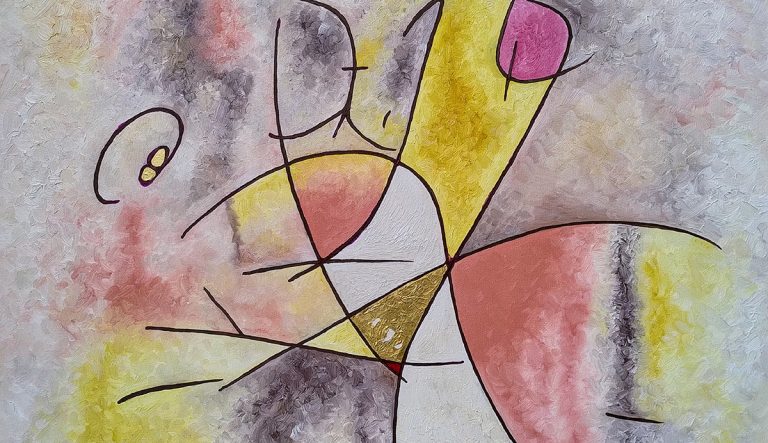Phoebe Thomasson, born in Portsmouth, UK, in 1972, is an artist who has carved out a unique path in the world of contemporary art. With a practice rooted in her self-developed lexicon of mark-making and idioms of color, Thomasson has pioneered a visual language she calls ‘Differentism.’ This approach is not merely a technique but a philosophy that guides her creative process. Through extensive experimentation across various mediums, she has developed a way of expressing the granular structure of subconscious contradictions and the often perverse, dualistic aspects of existence. Thomasson’s work is a constant exploration of the struggle with chaos and the relationship between the left and right hemispheres of the brain. Her journey through love, loss, and conflict, particularly the unspoken aspects of mental illness, infuses her art with an instinctual depth, making it a profound expression of her inner world.

One of Thomasson’s works that encapsulates her artistic philosophy is titled La Trajectoire el Vent et du Soleil. This piece, rendered in oil and gold foil on canvas, measures 80 x 80 cm. At first glance, the painting presents a serene and almost idyllic landscape. However, upon closer inspection, the complexities and contradictions that Thomasson seeks to explore begin to emerge.
The canvas is dominated by milky pastel tones, which at first might seem gentle and calming. These colors evoke the soft hues of a sunset over the Welsh hills, as seen from a vantage point high on the rocky face of Clevedon. The pastel tones suggest a sense of tranquility, a moment of peace captured at the end of the day. But Thomasson does not allow the viewer to linger in this serene landscape unchallenged. Instead, she introduces elements of chaos and movement, forcing the viewer to engage with the painting on a deeper level.
Thomasson’s use of texture is particularly diffferent in this piece. The surface of the canvas is whipped and churned, much like the waters of the Bristol Channel during a windy evening. The texture seems to ripple across the canvas, as if the forces of nature themselves are at play within the painting. These textures are not just decorative; they serve to disrupt the serenity of the pastel tones, reminding the viewer that even in moments of calm, there are underlying forces at work.
The gold foil in the painting adds another layer of complexity. It catches the light, creating a sense of movement and shifting perspectives as the viewer changes their position relative to the canvas. This interplay of light and texture suggests the dynamic and ever-changing nature of the world Thomasson seeks to depict. The gold foil is not merely a decorative element but serves as a metaphor for the sun’s trajectory, its light fragmented and refracted by the forces of wind and water.
The composition of the painting is both deliberate and spontaneous, reflecting Thomasson’s exploration of the relationship between the left and right hemispheres of the brain. The left hemisphere, associated with logic and order, is represented by the structured, almost geometric partitions of the canvas. These partitions create a sense of order, a framework within which the chaotic elements can exist. The right hemisphere, associated with creativity and intuition, is represented by the more fluid and organic elements of the painting – the rippling textures, the soft pastel tones, and the shimmering gold foil.
Thomasson’s work invites the viewer to engage with these dualities, to explore the tension between order and chaos, logic and intuition, serenity and turmoil. In La Trajectoire el Vent et du Soleil, she captures a moment that is both fleeting and eternal, a snapshot of the ever-changing relationship between the elements and forces that shape our world.
Through this painting, Thomasson offers a visual meditation on the complexities of existence. The serene landscape is not merely a backdrop but a stage upon which the drama of life unfolds. The forces of wind, water, and light are not just natural phenomena but metaphors for the inner conflicts and contradictions that define the human experience. In this way, Thomasson’s work transcends the boundaries of traditional landscape painting, offering instead a profound exploration of the human condition.
La Trajectoire el Vent et du Soleil is more than just a painting; it is an invitation to explore the depths of the subconscious, to confront the dualities of existence, and to find meaning in the chaos. Through her unique approach to art, Thomasson continues to push the boundaries of what is possible, challenging viewers to see the world – and themselves – in a new light.

